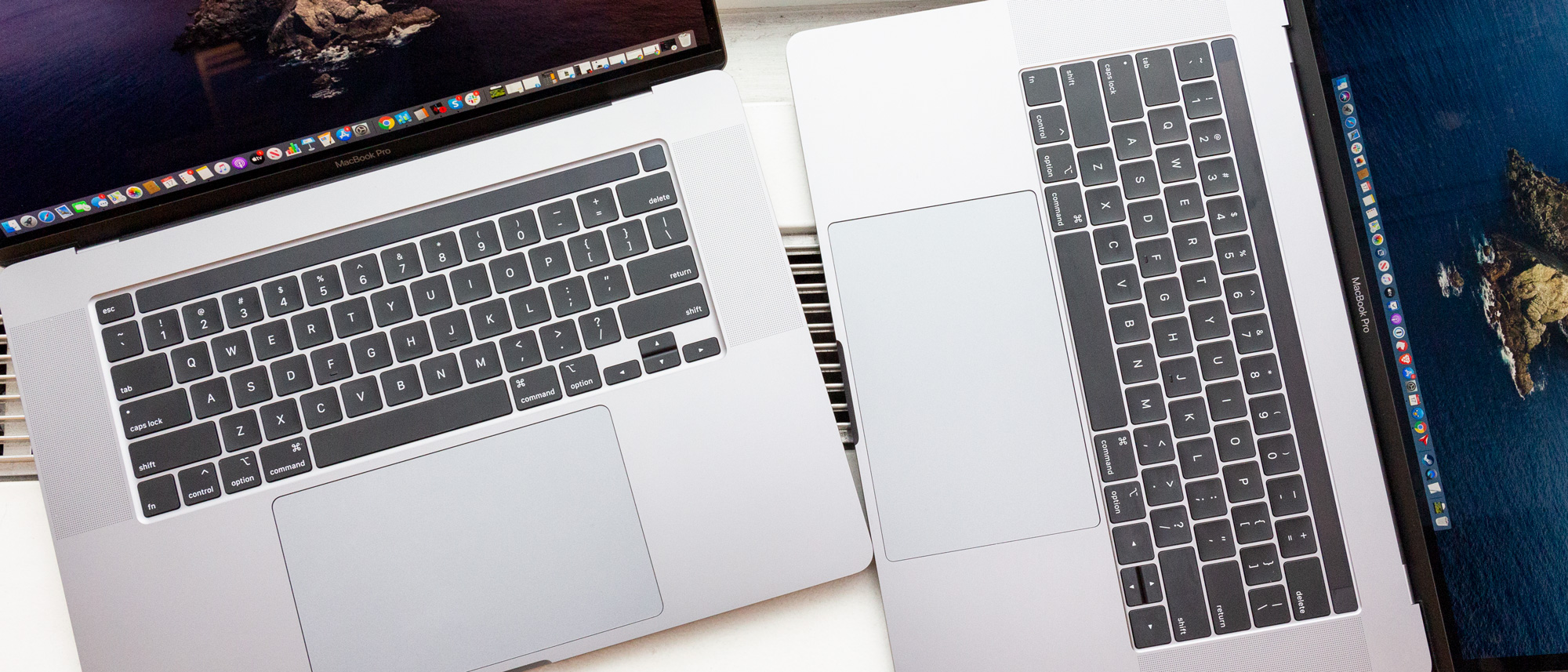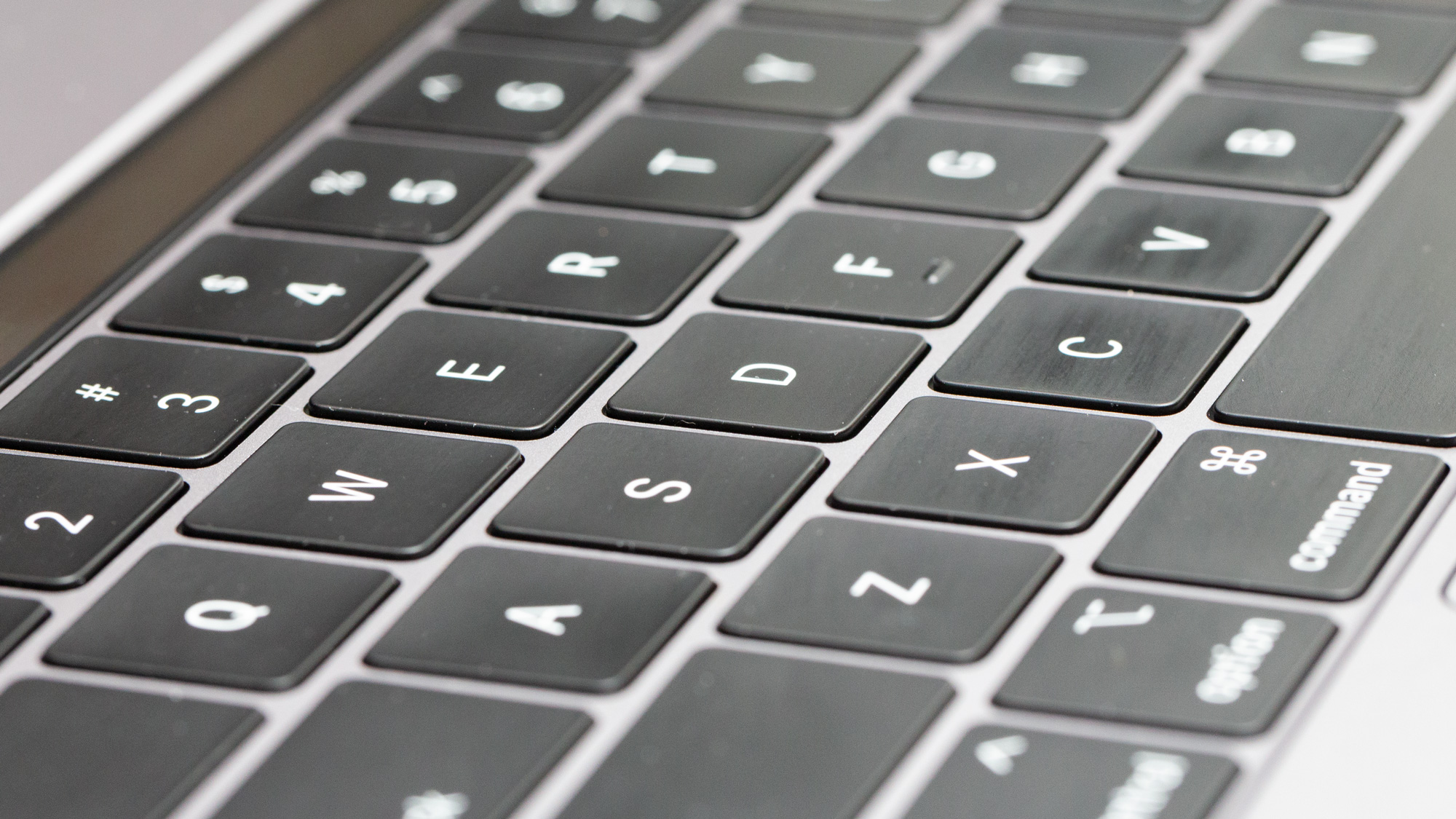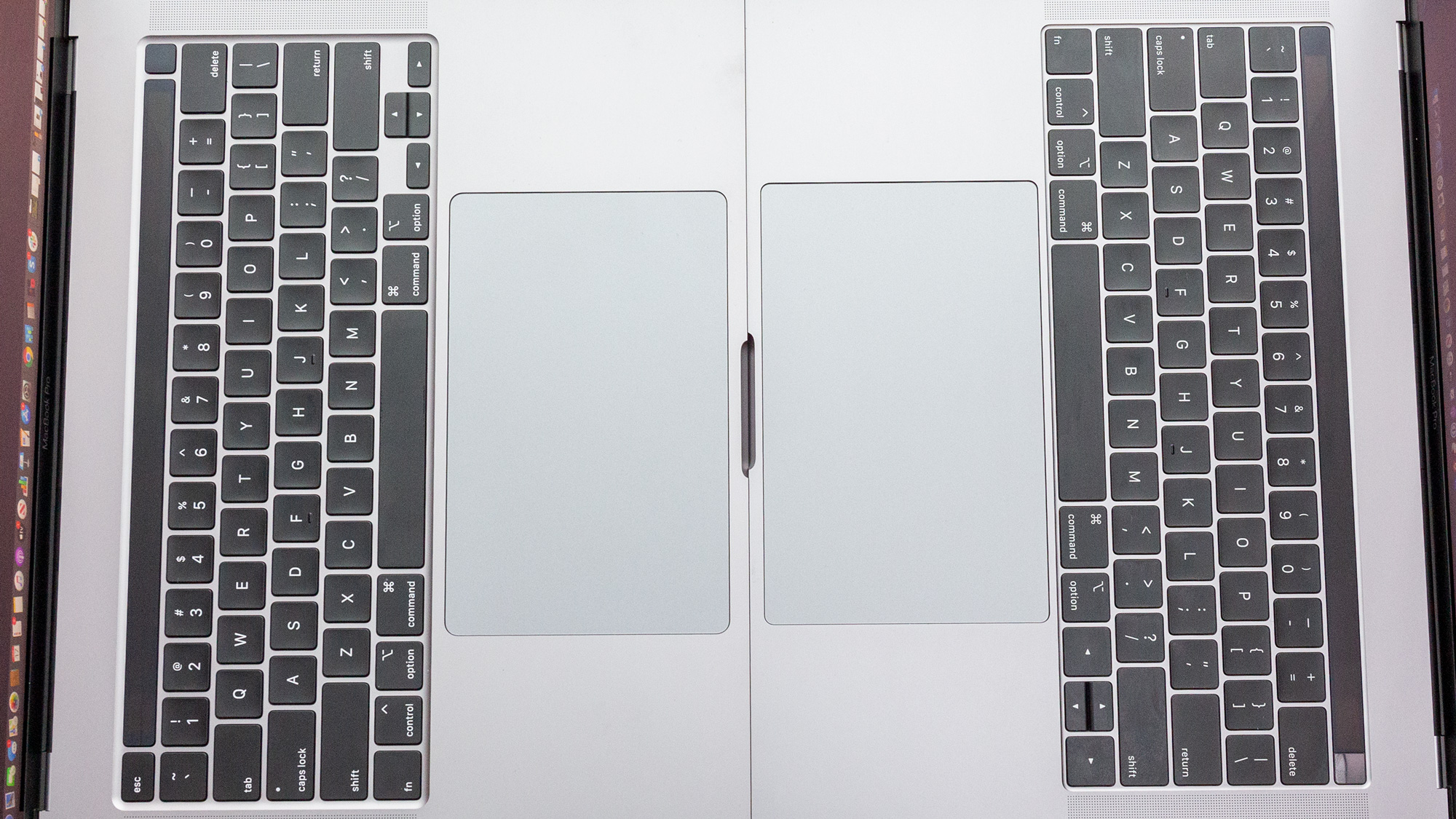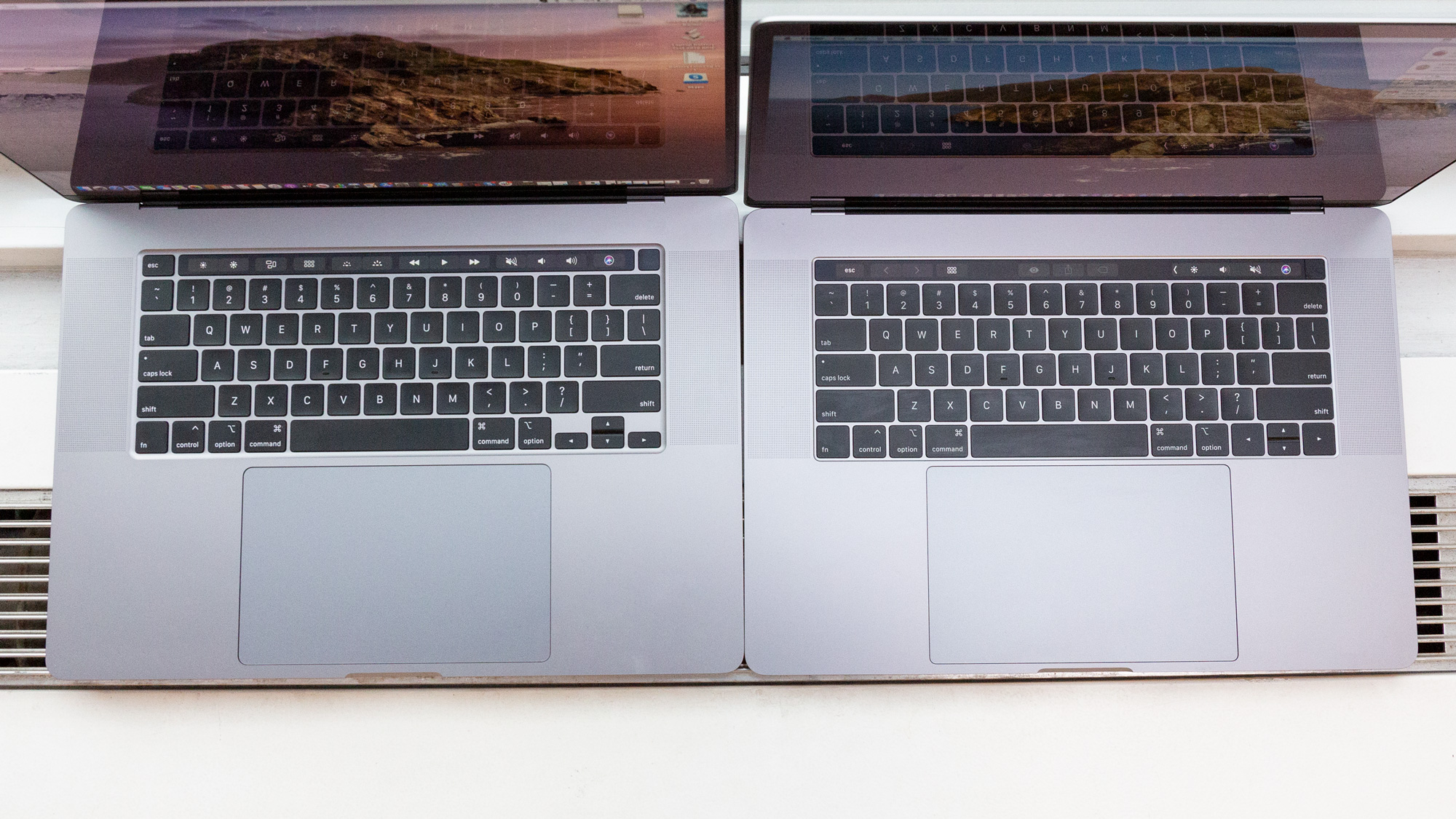Apple keyboard face-off: Are the MacBook Pro's 'scissor' keys really better?
There is a clear winner

The days of Apple's troubled "butterfly" keyboard are numbered. The tech giant opted to use a traditional scissor-style switch in its new 16-inch MacBook Pro and is expected to ditch the butterfly keyboard for good by the end of 2020.
Almost identical to Apple's old scissor keyboard, the new version is said to be not only more reliable, but also more comfortable to type on, than the butterfly keyboard.
To test this claim, we handed a now-discontinued 15-inch MacBook Pro with a butterfly keyboard and the new 16-inch MacBook Pro with a scissor keyboard to folks around the Laptop Mag office. We told them to try out the two keyboards side by side and to take a typing test to determine which keyboard they could type faster and more accurately on.
Here's how the 16-inch MacBook Pro's new scissor keyboard stacks up against the divisive butterfly keyboard.
Phillip Tracy, senior writer
The 15-inch MacBook Pro's butterfly keyboard would be a deal breaker for me if I were looking for a new laptop. The keys are so shallow that typing on the now-discontinued MacBook Pro is akin to tapping on a desk. During the typing test, my fingers frequently bottomed out, or fully depressed the keys to a hard, uncomfortable stop.

That said, I can see how someone could get used to the butterfly keys; they have a satisfying, audible click and don't require much force to actuate. But for me, Apple's butterfly keyboard is one of the worst I've had the misfortune to type on.
It's a good thing the traditional scissor-switch keyboard on the 16-inch MacBook Pro is a major improvement. Yes, the keys are still quite shallow, but at least my fingers could feel the keys sink as I typed. More important, the scissor keys were cushier on my fingertips, which didn't ache after a long typing session as they did on the older MacBook Pro.
Sign up to receive The Snapshot, a free special dispatch from Laptop Mag, in your inbox.
I typed at 118 words per minute with 95% accuracy on the 10FastFingers.com typing test with the 16-inch MacBook Pro. That's a better result than the 112 wpm with 95% accuracy I hit on the 15-inch MacBook Pro.
Winner: Scissor keyboard
Rami Tabari, staff writer
Typing on the 15-inch MacBook Pro's butterfly keyboard was like typing on a desk that was kind of clicky. When everyone was talking about Apple fixing the MacBook's keyboard, I was betting against it. But despite the relatively low travel, the scissor keys on the 16-inch MacBook Pro made it feel like I was typing on an actual keyboard.

I blasted through 74 wpm on the 10FastFingers.com typing test with the 16-inch MacBook Pro's keyboard, which was slightly faster than the 72 wpm I hit with the 15-inch model. I constantly felt like I was bottoming out on the 15-inch MacBook Pro's keyboard, whereas the 16-inch model's keys were so clicky that I couldn't believe it was a MacBook.
Winner: Scissor keyboard
Sherri L. Smith, assistant managing editor
Let's be clear: I'm not a fan of either of the current MacBook Pros's keyboards. At work, I'm stubbornly holding on to my 15-inch MacBook Pro from mid-2015. It's springy with nice travel and has just the right amount of clickiness (scissor switches for life!). I'm currently in a battle with the IT department to keep this beauty just because of the keyboard. They would like to swap my beloved work laptop for the butterfly-switch-laden monstrosity that is the 2016 MacBook Pro. So it goes without saying that I wasn't the most enthused to be taking part in this challenge.

I started on the 15-inch MacBook Pro with butterfly switches and immediately regretted my decision to take part in this exercise. The keys were so shallow, I felt like I bottomed out as soon as I pressed a key. There wasn't any semblance of feedback, just a dull, uncomfortable thud. My poor fingers felt like the sleep-deprived princess in the Princess and the Pea, just typing on boulders. I really don't understand how people have fooled themselves into thinking this is in any way an acceptable way to live. When I took the 10FastFingers typing test, I reached only 54 wpm, 89% accuracy which is ridiculously short of my usual 70 wpm, 95% accuracy rate.
Typing on the 16-inch MacBook Pro was much better. I didn't bottom out, and there was some feedback. Was it as springy as my good ol' 2015 MacBook Pro? Nope, but it was so much better than the most recent 15-inch model. I could grudgingly get used to this if I had to, i.e., if this was my work-issued laptop. On the 10FastFingers test, I hit 64 wpm with 92% accuracy, which is below my usual score but not so far off.
Overall, I still prefer my 2015 MacBook, but I could live with the 16-inch system. I'm really hoping Apple will find a way to bring the springy comfort of 2015 into the next decade.
Winner: Scissor keyboard
Matthew Murray, head of testing
I haven't put much stake in typing tests since I started regularly hitting 100 wpm in eighth grade. Most of the 29 years since have involved making only minor speed increases, gently refining my technique and maintaining the health of my valuable carpal tunnel. So seeing these decades of work wither before my eyes with a speed of 79 wpm was humiliating, to say the least. What was to blame? The older MacBook Pro's butterfly keyboard. Designed exclusively for thinness, it bombs at actual typing, with its dearth of travel making the experience only marginally less excruciating than speed-drumming your fingertips on concrete.

The scissor keyboard isn't perfect. But its keys do move, in acknowledgment of the physical reality that the coordination of the motion of your fingers with the motion of the keys is essential to speedy, accurate and comfortable typing. The scissor keyboard let me clock 103 wpm — much closer to my current norm — and thus redeem my self-worth. But thanks to the butterfly keyboard, my hands still hurt for an hour afterward — something that hasn't happened to me in 20 years. I thought it was only in chaos theory that butterflies did this much damage.
Winner: Scissor keyboard
Madeline Ricchiuto, lab tester
Despite being faster during the typing test on the discontinued 15-inch MacBook Pro, Apple's butterfly keyboard is the worst thing I have ever had the displeasure of typing on. The thin membrane and butterfly switches result in a typing experience that feels disconnected. My fingers would actually get lost on the butterfly keyboard if I wasn't careful.

That wouldn't be the worst thing, if that were the biggest problem I had with the butterfly keyboard. But I ended up slamming my fingers against the keys with too much force because of how little give they had. This left me with aching fingers.
The 16-inch MacBook Pro's scissor-switch keyboard was far more comfortable. It felt like the old-style MacBook Pro keyboards with enough resistance to not make me feel like I was stabbing my fingers into the aluminum body of the laptop, and the increased key height was enough to keep my fingers from sliding out of position without warning.
During the typing test, I hit speeds of 88 wpm with 98% accuracy on the 15-inch MacBook Pro, compared with 85 wpm (also 98% accuracy) on the 16-inch MacBook Pro. However, my increased speed on the butterfly keyboard wasn't worth the agony of using it.
Winner: Scissor keyboard
Bottom line
Our verdict is out, and it's unanimous: The 16-inch MacBook Pro's scissor keyboard is a resounding success. All five of the Laptop Mag staffers who compared the two keyboards agreed that the new scissor keys are more comfortable to type on than the butterfly keys.
We each noted that the scissor keyboard provides more travel than the extremely shallow butterfly keyboard. And while the 16-inch MacBook's keyboard isn't as good as those on competing laptops, its springiness saved our fingers from the pain we felt after typing on the 15-inch model.
Factor in the reliability issues that have plagued the butterfly keyboard in recent years, and it's clear that Apple made the right move by shifting back to a more traditional-style switch. Now we're just waiting for the rest of the company's laptops — the MacBook Air and 13-inch Macbook Pro — to follow in the footsteps of their bigger sibling.
Phillip Tracy is the assistant managing editor at Laptop Mag where he reviews laptops, phones and other gadgets while covering the latest industry news. After graduating with a journalism degree from the University of Texas at Austin, Phillip became a tech reporter at the Daily Dot. There, he wrote reviews for a range of gadgets and covered everything from social media trends to cybersecurity. Prior to that, he wrote for RCR Wireless News covering 5G and IoT. When he's not tinkering with devices, you can find Phillip playing video games, reading, traveling or watching soccer.
- Sherri L. SmithEditor in Chief
- Rami TabariReviews Editor
- Matthew MurrayHead of Testing

